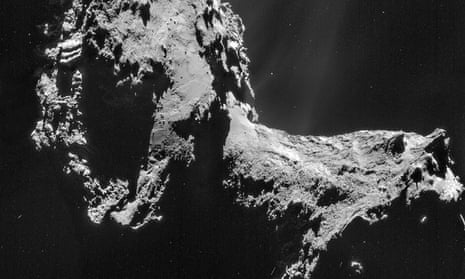The landing of Philae on the nucleus of Comet Churyumov-Gerasimenko did not go to plan, but it returned a bonanza of valuable data before the loss of its battery power sent it into hibernation.
Its controllers remain ecstatic about its success, and even expect that we will hear more from it next spring or summer. As the comet draws towards its closest point to the Sun in August, Philae should warm up and the growing intensity of sunlight on its partially shaded solar arrays may allow its batteries to be recharged.
Meantime, Philae’s parent craft, Rosetta, is functioning perfectly and seeing increasing cometary activity in the form of jets of material streaming away from the comet. For the first time, there is evidence that the nucleus may be becoming swathed in a tenuous gaseous cloud.
The hope is that Rosetta’s high resolution cameras may spot Philae at its resting place, perhaps propped against a rocky outcrop or ridge. Results from a radio experiment between Rosetta and Philae, before it fell silent, have allowed scientists to narrow the lander’s most likely location to a 30x350 metres area of the nucleus.
In other news, Nasa has lost contact with one of two solar-orbiting probes that gave us a vital 360° view of the Sun’s surface. Stereo-B (or Stereo-Behind) is slightly further from the Sun than the Earth and lags increasingly behind our planet. It appears to have become disorientated on 1 October, losing its ability to recharge its batteries and point its antenna to the Earth.

Comments (…)
Sign in or create your Guardian account to join the discussion